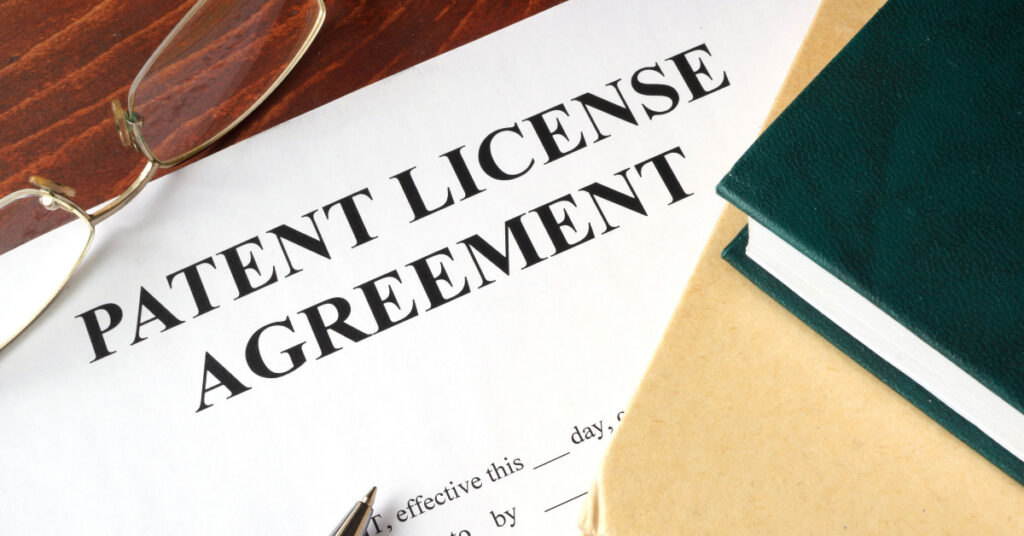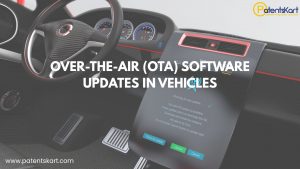What is a Patent?
An exclusive right granted for an invention, which is either a product or a process, and offers a new way of doing work or provides a new technical solution to an existing problem, is called a patent.
What is called Patent Licensing?
Patent Licensing is an act of or a process of permitting, to a third party, authorizations to extricate benefits by selling and using the licensed product. The patent possessor gives license to a third person to utilize, sell and extract profits from his patented innovation, for a sum already determined as royalty.
Patent licensing is the act or practice of granting permission to a third party to profit from the licensed product by selling and utilizing it. The patent owner grants third-party permission to use, sell, and profit from his patented innovation in exchange for a royalty payment.
A patent owner can give or transfer his or her patent rights to a third party. The licensor assigns his rights to the invented patented IP for a mutually agreed-upon period. During this time, the licensee can reap benefits and have rights to the patent’s interest. He may use and manufacture the licensed design, as well as profit from it during the licensed period.
What are the types of Patent Licenses?
There are the following five types of patent licensing:
Exclusive License
An exclusive license is one in which the licensee receives all of the patent’s rights but not the title. In this case, the licensee has all of the rights of the patent owner except the ability to transfer the patent to another person.
This limitation exists because, in such a license, even after the transfer of all other rights, the patent owner retains ownership of the title.
It is made entirely of grain by a single party and thus cannot be transferred to another. Because the rights are less exploited and the licensee has a monopoly over the market, the chances of the patent being infringed are low in this type of license.
Non-exclusive License
The licensee has the right to sell and manufacture the patented design under a non-exclusive right, but this right is not exclusive. The patent holder may also grant permission to any other person to use and manufacture such patented design.
In this case, they all have the right to manufacture, use, and sell the patented design. The rights granted by this license are not exclusive to a single licensee. Sublicense can be supposed to concede certain authorized rights on an item to an outsider by the licensee.
Cross License
When a product wants assistance from some other product to make its place in the marketplace and for better application, cross-license is preferred. Cross license can be comprehended as the trade of license amid diverse organizations and individuals.
Compulsory License
When the government permits approval to any persons or companies to use, sell or make a patented design or product, regardless of the consciousness of the patent owner, for the public good, it is denoted as a compulsory license.
A compulsory license is generally seen being granted in the medicinal products and the products which meet the criteria as mentioned in Section 84 of the Patents Act, 1970.
What are the Boons of Patent Licensing?
Transfer of risks
With patent licensing the patent owner can hand over risks concerned in the manufacture of patent design or product to the licensee.
Global Market
It turns out to be difficult for many companies to have a bulk production of a product alone. Patent licensing roll up to aid to overcome this complicatedness as it permits other companies to produce the patent products and thus helps in mass manufacture. Patent licensing thus can help in familiarising one’s invention in the global market.
Limited Period
Because patent licensing is done for a restrained period, the owner gets back his sole rights over his invention as and when the license period terminates.
Competitive Advantage
If the patent is licensed to a previously recognized organization with a hefty customer base, the patent invention will have a larger market to apprehend in comparison to other patents, giving it a competitive superiority over other patents.
What are the Common Mistakes Committed During Patent Licensing?
- The licensee tends to use the patented design or product before signing the license agreement resultant in patent violation. The licensee should assurance that he has contracted the license agreement before using or trading the product or design so patented.
- In the haste of growing rapidly, some inventors fail to find a suitable licensee for their product and end up granting license to some non-competent party. This outcomes in the disappointment of the innovation which could have had prospered in the global market had the owner picked for an effectual licensee.
- The absence of cognizance regarding the liability of the owner also leads to loss for the licensee. The licensor is still the owner of the patented product or design, even during the license period. Thus, he can be held accountable for his innovation even during the license period.
What are some of the most typical blunders made when it comes to patent licensing?
- Patent infringement occurs when the licensee uses the patented design or product before signing the license agreement. Before using or selling the patented product or design, the licensee should make sure he has signed the license agreement.
- Some inventors, in their rush to expand quickly, fail to select a suitable licensee for their product and wind up granting a license to a non-competent party. This leads to the failure of the invention, which could have thrived in the worldwide market if the proprietor had chosen an effective licensee.
- The licensee suffers losses because of the owner’s lack of awareness of his or her responsibilities. Even during the license period, the licensor retains ownership of the patented product or design. As a result, even throughout the license period, he may be held liable for his invention.
What Methods are used to License Patents?
Patent licensing can be approached in two ways:
Carrot Licensing
In this instance, the person or company with whom one wishes to do business is unwilling to use the patented technology or product. The patent owner must persuade the party to use his product and explain how licensing the product or technique will benefit them.
Stick Licensing
In this situation, the individual or organization has already utilized or is currently using the patented design, technology, or product, infringing on the patent. The owner has the option of filing a lawsuit against the infringer or reaching an agreement with the infringer to license his patent.
Conclusion-
In this situation, the individual or organization has already utilized or is currently using the patented design, technology, or product, infringing on the patent. The owner has the option of filing a lawsuit against the infringer or reaching an agreement with the infringer to license his patent.
Hence, to ease this job Patentkart provides easiness to the inventors. In the patent filing, there are main aspects to scrutinize. The patent agent in Patentkart.com provides A to Z facilities from the patent landscape.
Patent search, as well as they, do prior art search alongside patent writer, they also file the patent application. The company has the world in a class patent practitioner who helps in the patent drawing, patent analytics, patent drafting, and prosecution of patents in the court of law.







